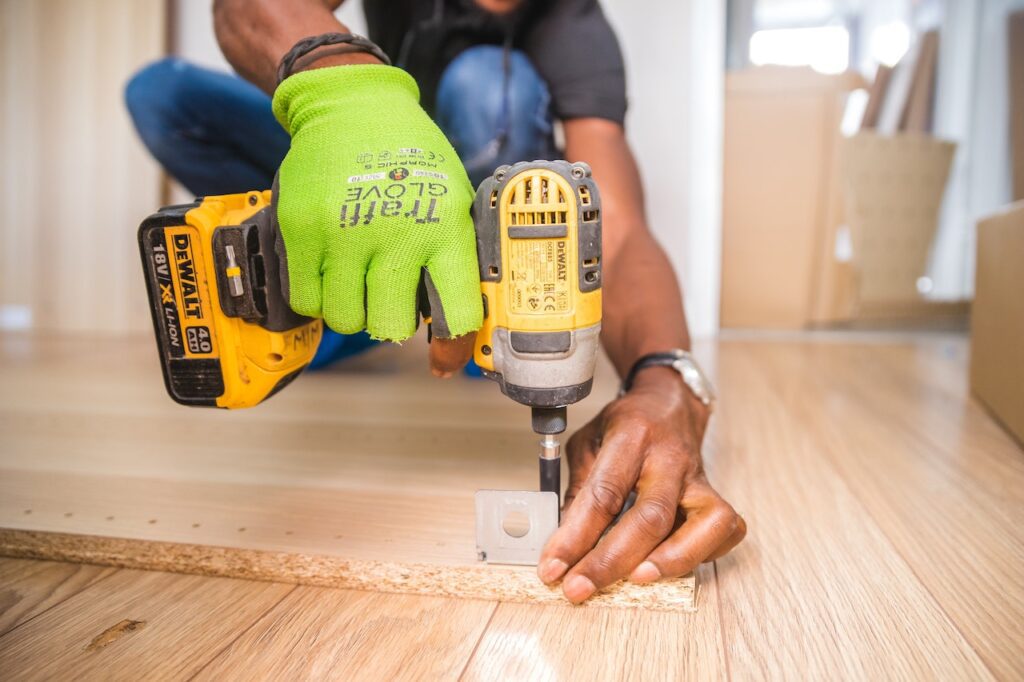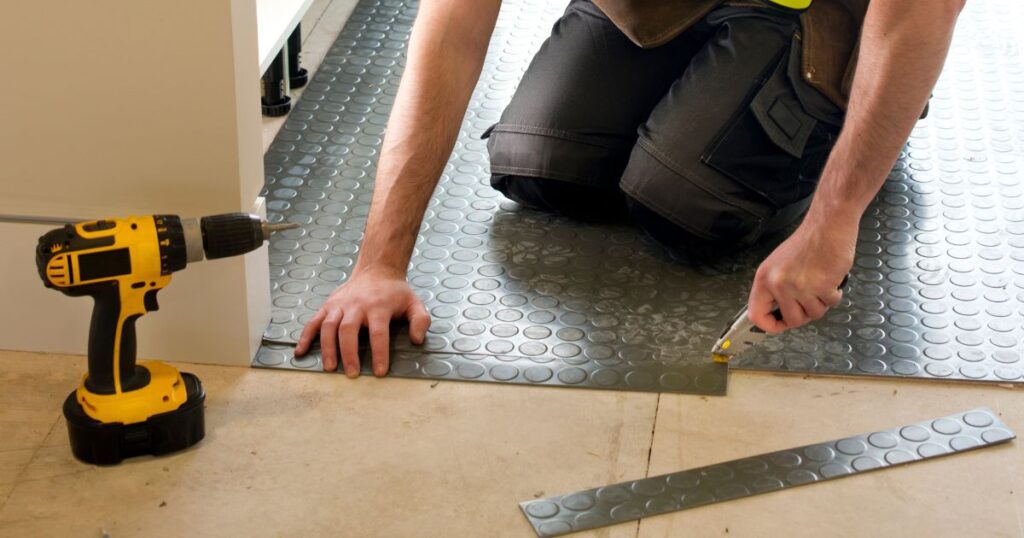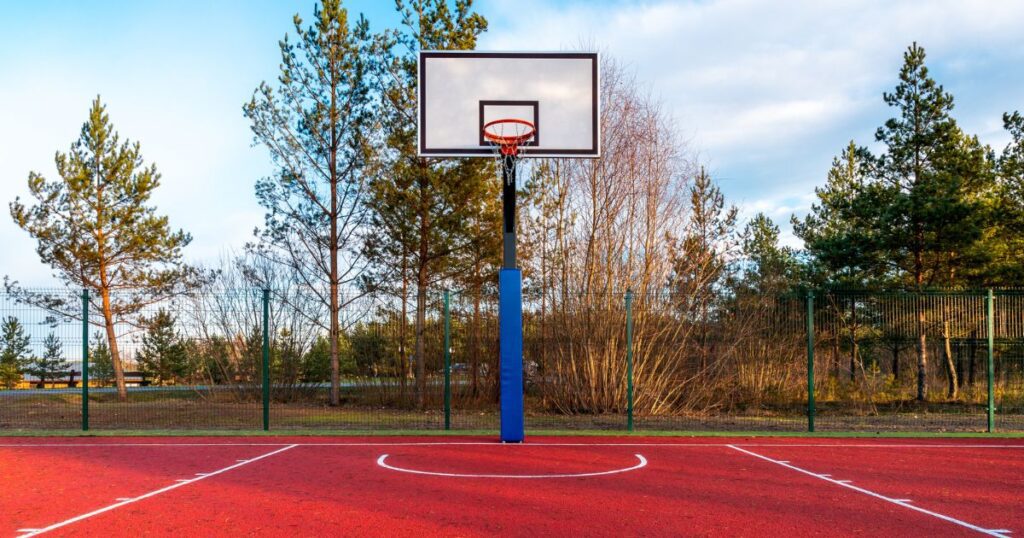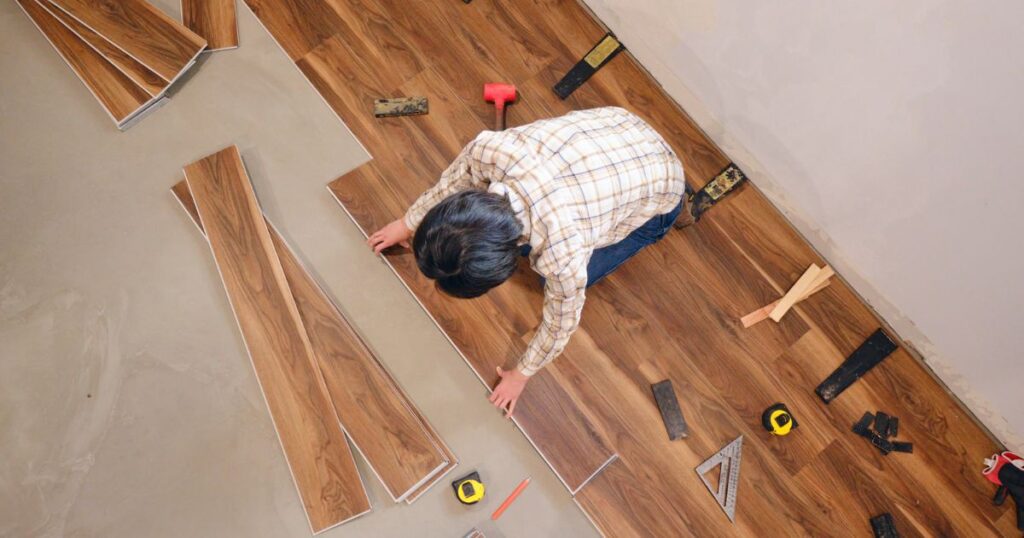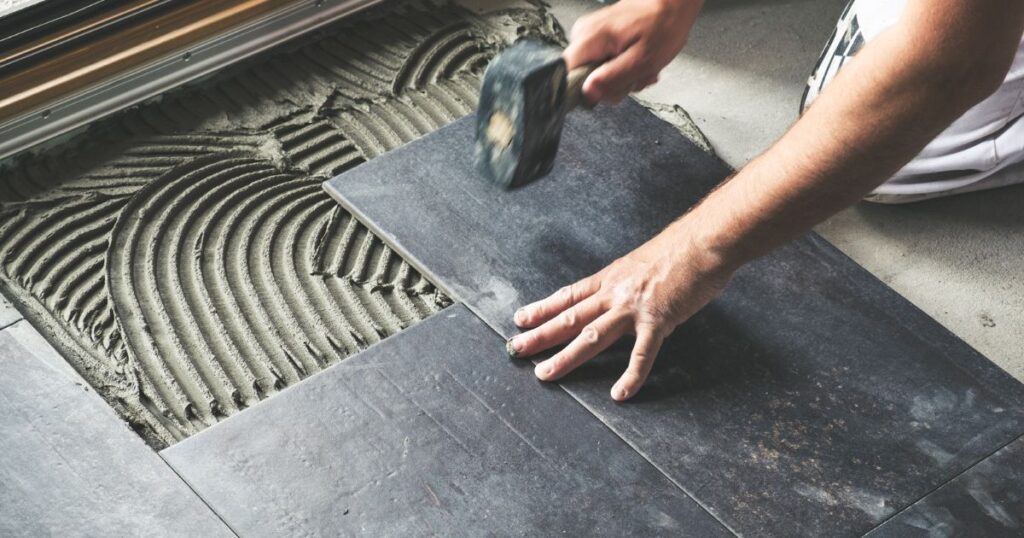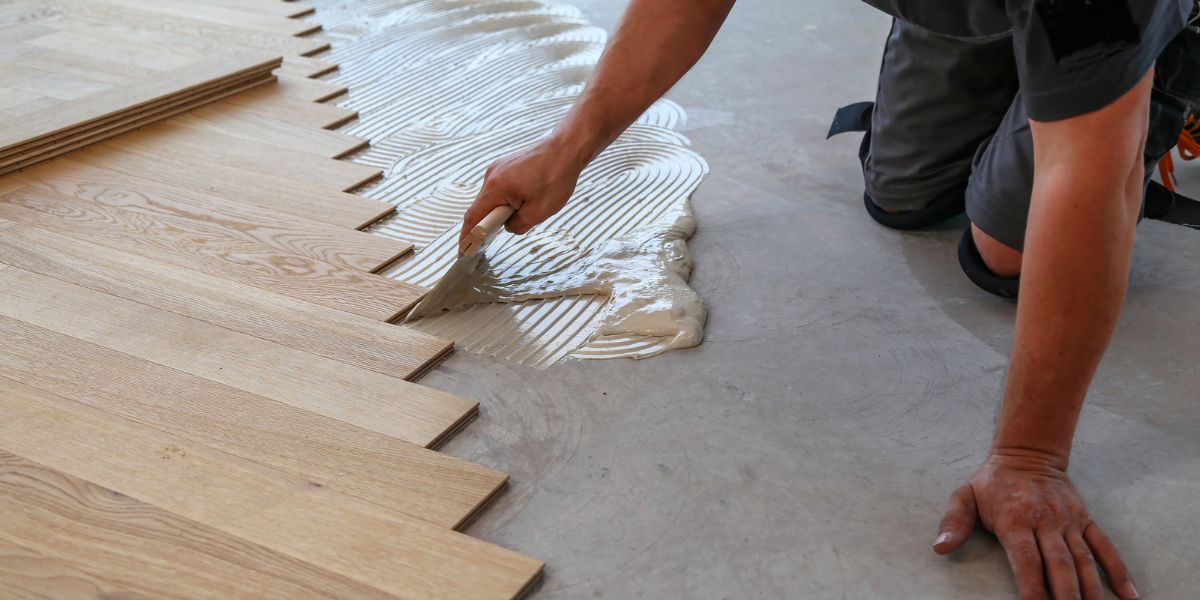
The Problem of Swollen Laminate Flooring: A Costly and Annoying Issue
Laminate flooring is durable, easy to clean, and relatively affordable. However, it’s not immune to damage. One of the most common issues with laminate flooring is swelling.
How to repair swollen laminate flooring without replacing it? Swelling occurs when moisture gets trapped underneath the surface layer of the floorboards and causes them to expand. This can happen due to a variety of reasons, such as water spills, high humidity levels, or leaks from appliances or pipes.
The problem with swollen laminate flooring is not just aesthetic – it can also be a safety hazard. Swollen flooring may cause tripping or slipping accidents if left unattended.
Moreover, if the underlying issue causing the swelling is not addressed promptly, it may lead to further damage, such as mold growth or structural issues. Replacing an entire laminate floor can be a costly and time-consuming process that many people want to avoid if possible.
Luckily there are ways to repair swollen areas without having to replace the entire floor. In this article, we’ll cover some simple yet effective methods for repairing swollen laminate flooring on your own.
RELATED: Staggering Vinyl Plank Flooring: Achieving a Professional-Looking Finish
Repairing vs. Replacing: The Benefits of Fixing Your Laminate Floor
Many homeowners may be tempted to ignore minor swelling in their laminate floors in order to avoid the hassle and expense of repairing it. However, this invariably leads to more significant problems down the road. Ignoring even minor damage like swelling puts you at risk for more severe problems later on such as irreparable water damage or mold growth under your floors.
By fixing any swelled areas promptly and efficiently on your own, you’re saving yourself money on repairs later down the line whilst maintaining your home’s value long term. Furthermore, repairing your laminated floor instead of replacing saves you valuable time struggling with complicated installations, which could take weeks depending on whether you hire contractors or DIY it yourself, making repairing rather than replacing an attractive option for anyone looking to resolve a flooring issue quickly.
How to Repair Swollen Laminate Flooring Without Replacing
Now that you understand the importance of repairing your swollen laminate flooring let’s dive into some of the methods for doing so. There are several ways to address swelling in laminate flooring, each with its own pros and cons. By learning about these different methods, you’ll be better equipped to choose the right one for your unique situation.
One method involves sanding down swollen areas of the floorboards without removing too much material. This approach smooths out uneven surfaces and removes rough edges, making it an effective way to repair minor damage on your floor.
However, if the swelling is too severe, it might require more drastic measures like replacing damaged boards. Another approach is using wood fillers that come in different colors, perfect for concealing defects in your floor while repairing them simultaneously.
Wood fillers are great for repairing small gaps or cracks and can help restore your laminate floors back to their original appearance. With these methods in mind, let’s move on to our step-by-step guide on repairing swollen laminate flooring without having to replace all of it.
Assessing the Damage
Laminate flooring can be a great addition to any home, but it’s not invincible. Even with proper care and maintenance, it can still be susceptible to damage from various factors such as moisture and water. When dealing with a swollen laminate floor, it’s important to inspect the affected area and determine the extent of the damage. Start by examining the surface of your laminate floor. Check for any visible signs of swelling or bulging in areas where there shouldn’t be any. Run your hand over these areas and feel for any unevenness or ridges that may have formed due to the swelling. Next, look for signs of moisture or water damage that may have caused the swelling. Check if there are any leaks in your plumbing system or if there has been flooding in your home recently. Excess humidity levels could also be contributing to the problem. Once you’ve identified the cause of the damage, it’s important to address these underlying issues before repairing your flooring. Otherwise, you’ll just end up with a temporarily fixed problem that will eventually resurface again.
Identifying Underlying Issues
Don’t just look at what’s on the surface when assessing your damaged laminate flooring – try to identify any underlying issues that could have caused this problem in the first place. For example, check if there are gaps between your flooring and walls where moisture could seep through. Inspect nearby windows and doors for cracks or gaps as well that could allow moisture inside.
You should also consider whether there is adequate ventilation in your home since poor ventilation can trap humidity levels indoors which leads to excess moisture buildup on surfaces. If you can’t identify any obvious sources of water damage, consider hiring a professional inspector who can help assess more hidden parts of your house, such as crawl spaces for leaking pipes or other sources of excess moisture.
Conclusion
Assessing the damage to your laminate flooring is an important first step in repairing it properly. Take the time to inspect the affected area thoroughly and identify any underlying issues that could be contributing to the problem before starting any repairs.
By taking care of these issues first, you’ll ensure that your repaired laminate flooring will last longer and be less likely to suffer from similar problems in the future. A little extra work now can save you a lot of hassle down the road, so don’t skimp on this important step!
Drying Out the Floor
Use a Dehumidifier or Fans to Dry Out Any Excess Moisture in the Affected Area
If you’ve got swollen laminate flooring, chances are you’ve got some serious moisture issues going on. And if you’re not careful, those issues could lead to even more serious problems down the road.
That’s why it’s important to get things dried out as quickly as possible. One of the best ways to do this is by using a dehumidifier or fans.
These tools work by pulling moisture out of the air and moving it away from your flooring. This can help speed up the drying process and prevent any further damage from occurring.
Now, I know what some of you might be thinking: “But isn’t using a dehumidifier or fans just a waste of energy?” And my response to that is simple: no, it’s not. In fact, it’s one of the most effective things you can do to save your laminate flooring from further damage.
Remove Any Standing Water or Wet Materials That May be Contributing to the Problem
Another key step in drying out your laminate flooring is getting rid of any standing water or wet materials that may be contributing to the problem. This could include anything from spilled drinks and pet urine to leaky pipes and damaged roofing.
Whatever the source of moisture may be, it’s crucial that you get rid of it as soon as possible. If left unchecked, standing water and wet materials can seep into your flooring and cause even more damage over time.
So break out your mop and bucket, shop vac, or whatever else you need to remove any excess water or wet materials in your home. Your laminate flooring will thank you for it later.
Unpopular Opinion: Failure to Dry Out Your Floor Could Result in Bigger Issues Down the Line
I know some of you out there might be thinking, “Eh, it’s just a little moisture. What’s the big deal?” Well, let me tell you: failing to dry out your laminate flooring could lead to much bigger and more expensive problems down the line. For one thing, excess moisture can cause your flooring to warp and buckle over time. This can create uneven surfaces that not only look unsightly but can also pose a tripping hazard for you and your family.
But perhaps even more concerning is the fact that moist or wet environments are breeding grounds for mold and mildew. If left unchecked, these fungi can spread throughout your home and cause serious health problems for anyone living there.
So do yourself a favor: take the time to dry out your laminate flooring properly. It may be a bit of a hassle in the short term, but it will save you a lot of headaches (and money) in the long run.
Sanding Down Swollen Areas
Don’t Rush It: Take Your Time Sanding
When it comes to sanding down swollen laminate flooring, you need to take your time. Rushing through this process could result in removing too much material and causing further damage to your flooring.
A sander can be a powerful tool, and if used incorrectly, it can easily ruin your floors. Take it slow, and don’t apply too much pressure when sanding the swollen areas.
Be Careful with Rough Edges
Once you’ve sanded down the swollen areas of your laminate flooring, make sure to smooth out any rough edges or uneven surfaces. These imperfections can cause tripping hazards or snag on furniture legs, causing further damage to the floor. Use fine-grit sandpaper to smooth out any rough spots and create a level surface.
Protect Yourself from Dust
When sanding down your swollen laminate flooring, it’s essential to protect yourself from dust particles that will inevitably be released during the process. Wear a dust mask and goggles while sanding, and make sure that any windows or doors in the room are open for proper ventilation.
Sanding is an important step in repairing swollen laminate flooring without replacing it entirely. However, make sure you do not rush this process since applying too much pressure can lead to further damage to the floor surface.
Be careful with rough edges after completing sanding, as they may cause tripping hazards if left untreated. But not least importantly, wear a dust mask while carrying out this activity since dust particles may be harmful if inhaled for long periods of time
Filling in Gaps and Cracks
Rescuing the Damaged Areas with Wood Filler
If your laminate flooring has suffered from water damage, chances are there are several gaps and cracks in the damaged areas. These gaps can be a breeding ground for mold and mildew, so it’s essential to fill them in as soon as possible.
One of the best ways to do this is by using a wood filler product. When choosing a wood filler, make sure you select one that matches the color of your laminate flooring so that it blends seamlessly.
Before filling in any gaps or cracks, ensure that the damaged area is clean and dry. Then, follow the instructions on your wood filler product carefully.
If you’re new to using a wood filler product, start with small areas first to get the hang of it. Apply a small amount of filler into each gap or crack with a putty knife, then smooth out any excess material.
Allow Time for Drying Before Sanding Down Again
Once you’ve filled in all of the gaps and cracks with wood filler, allow time for drying before sanding down again. Most wood fillers require at least 24 hours to dry completely but check the instructions on your specific product just to be sure.
After allowing enough time for drying, use fine-grit sandpaper (about 220 grit) for sanding down any raised areas of filler until they’re flush with the rest of the floor surface. Be careful not to sand too aggressively or go too deep into the laminate material; otherwise, you risk causing further damage.
Final Thoughts on Filling in Gaps and Cracks
Filling in gaps and cracks is an essential step when repairing swollen laminate flooring without replacing it entirely. Using a wood filler product can help rescue damaged areas quickly and efficiently while ensuring they blend in with the rest of the floor surface.
Always allow plenty of time for drying before sanding down again, and be cautious not to damage the laminate material further. With a bit of patience and care, you can rescue your laminate flooring from water damage and avoid costly replacement expenses.
Replacing Damaged Boards
No Choice but to Replace
If the laminate flooring is severely swollen and damaged, you may have no choice but to replace some of the boards. Fortunately, laminate flooring is relatively easy to replace compared to other types of flooring. The first step is to carefully remove the damaged boards without causing any further damage to the surrounding areas.
Sometimes this means removing additional boards as well. Don’t rush this process; it’s important to ensure that the new board will fit properly in place of the old one.
Matching New Boards with Existing Flooring
When purchasing new boards, be sure to match them with your existing flooring in terms of color, style, and thickness. This can be trickier than it sounds because manufacturers may change their product lines over time, making it difficult or impossible to find an exact match. In these cases, you may need to compromise by selecting a close match or by replacing more boards than originally planned so that the differences are less noticeable.
RELATED: Bouncing Back: The Resilience of Resilient Flooring
Professional Replacement vs. DIY Approach
Replacing damaged laminate flooring boards can be a DIY project for those with some experience in home repairs. However, if you’re uncomfortable with the task or don’t have the necessary tools on hand, it’s best to hire a professional installer. Keep in mind that while DIY approaches can save money upfront, poor execution can lead to costly mistakes down the line.
Frequently Asked Questions
How do you fix a laminate floor that is lifting?
To fix a laminate floor that is lifting, you can try using a laminate floor repair kit that includes adhesive or glue specifically designed for laminate flooring, following the instructions provided. Alternatively, you may need to remove and replace the affected planks if the damage is extensive or cannot be repaired.
What causes laminate flooring to swell?
Laminate flooring can swell due to excessive moisture or water exposure. This can happen from spills, leaks, or high humidity levels, causing the laminate planks to absorb moisture and expand.
How do you fix bubbling in laminate flooring?
To fix bubbling in laminate flooring, you can try using a syringe or needle to inject adhesive or glue into the affected area, applying pressure to flatten the bubble. If the bubbling persists or the damage is severe, it may be necessary to replace the damaged section or even the entire plank.
What causes laminate flooring to bubble?
Laminate flooring can bubble when moisture penetrates the plank’s core layer, causing it to separate from the upper decorative layer. This can be due to water spills, leaks, or excessive moisture in the subfloor.
What to do if my floor is lifting?
If your floor is lifting, it is important to identify the underlying cause. It could be due to water damage, improper installation, subfloor issues, or other factors. Addressing the cause is crucial, and depending on the severity and extent of the lifting, you may need to seek professional assistance or consider replacing the affected area.
What happens if water gets under laminate flooring?
If water gets under laminate flooring, it can cause swelling, warping, or cupping of the planks. It can also lead to mold and mildew growth, which can further damage the flooring and pose health risks. It is important to address water intrusion promptly by removing the water and drying the area thoroughly to prevent further damage.
Conclusion
Repairing swollen laminate flooring without replacing doesn’t have to be a daunting task if you follow these simple steps carefully and patiently: assess damage thoroughly before beginning repairs; dry out excess moisture effectively; sand down swollen areas evenly and carefully; fill gaps and cracks smoothly using quality wood filler products available in local hardware stores; replace damaged boards when necessary using matching materials or calling professional installers who know how best handle such situations. By following these steps, you can extend the life of your laminate flooring and save money while avoiding the hassle of complete replacement.
Remember that a little prevention goes a long way in protecting your floors from damage, so be sure to address any potential issues as soon as possible. With the right approach and a bit of patience, your laminate flooring can look as good as new for years to come.

